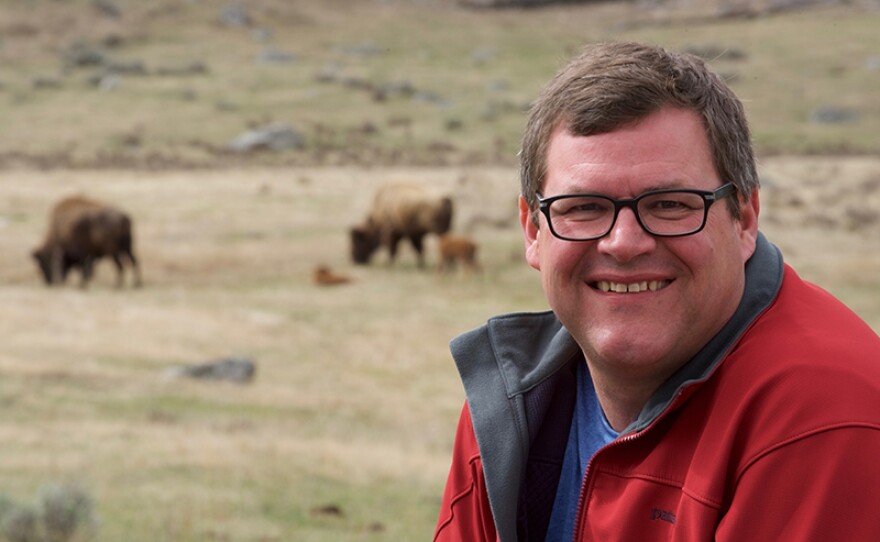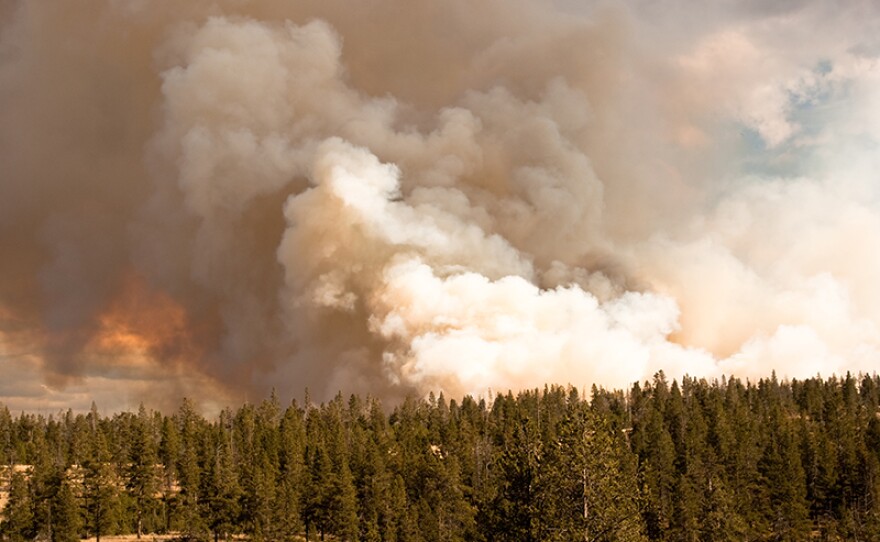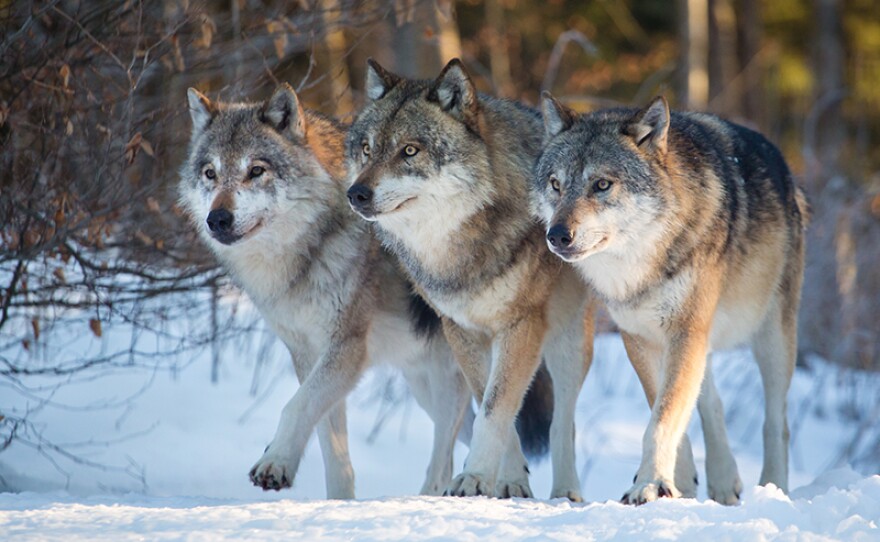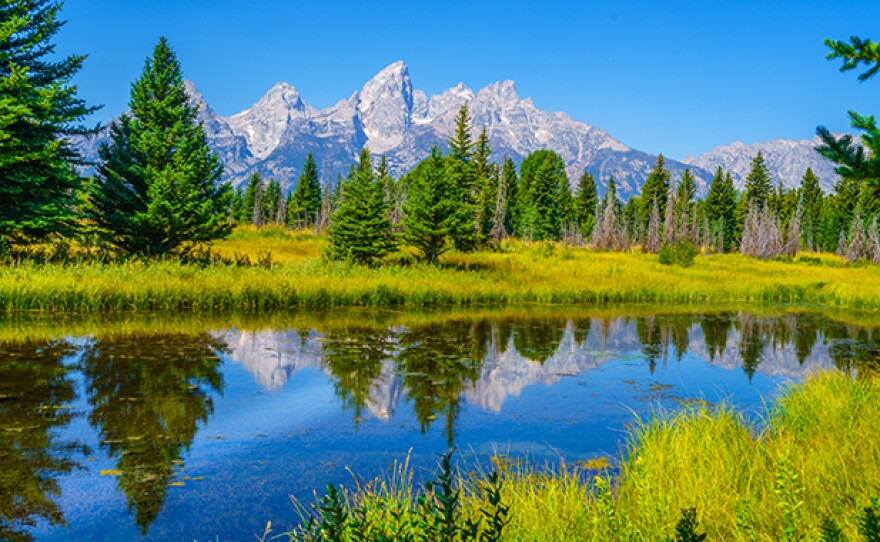Wednesdays, Dec. 13 - 27, 2023 at 10 p.m. on KPBS TV / Stream now with KPBS Passport + Encores Sundays, Dec. 17 - 31 at 10 p.m. on KPBS 2
— Showcases Animal Survival During the Region’s Toughest Spring —
Witness one of the greatest seasonal changes on planet Earth in the stunning new three-part series GREAT YELLOWSTONE THAW. Filmed over the course of several intense months, from deep winter to early summer, the series intercuts the stories of several different animal families — including wolves, bison, grizzlies, beavers and great gray owls.
The series follows the animals in the Yellowstone ecosystem as they emerge from winter’s cold and adapt to an early spring thaw, before encountering the soaring summer temperatures. From winter to summer, Yellowstone’s temperature typically swings 140 degrees.

Dr. Kirk Johnson, Sant Director of the Smithsonian National Museum of Natural History and a renowned paleontologist and author, hosts the series. Johnson and a team of Yellowstone experts explore how these animals fend off floods, starvation, and fires, as well as the area’s extreme evolution from cold to heat during the spring season.

GREAT YELLOWSTONE THAW showcases the extraordinary survival instincts the park’s natural species possess. Viewers will learn how the early thaw brings the bears of the Rocky Mountain region out of hibernation prematurely, creating concern over food supply.
Grizzly expert Casey Anderson is keeping an eye on a mom and her two 4-month-old cubs. They’ve emerged from hibernation and are facing the outside world for the first time as a new family. But Spring can be a time when these young bears are at their most vulnerable.
The wolves, which have recovered from their extinct status in the 1990s, are now beginning to thrive, but the fluctuating temperatures pose a threat to the species once again.
While the beavers have to make their homes in freezing rivers, the great gray owls must migrate to find food in thawed areas in order to survive.
Wildlife cameraman Jeff Hogan is astounded when he witnesses something on the Snake River that he’s never seen before. A beaver mom has made a decision to move her kits away from the lodge. As she makes the treacherous journey over the dams and upstream with a kit in her mouth, Jeff follows her and tries to work out why she’s made this unusual decision.
EPISODE GUIDE:
Episode 1 Encores Wednesday, Dec. 13 at 10 p.m. on KPBS TV and Sunday, Dec. 17 at 10 p.m. on KPBS 2 - Learn whether the brutal winter weather will favor predator or prey. Can the grizzlies that emerge early survive? Why are wolves and Great Gray owls in danger of starvation? Find out how Yellowstone’s unique geology affects the mighty bison.
Episode 2 Encores Wednesday, Dec. 20 at 10 p.m. on KPBS TV and Sunday, Dec. 24 at 10 p.m. on KPBS 2 - See how spring brings new life and a break from the brutal winter temperatures. But the dangers aren’t over. Wildlife families face a torrent of water cascading down the mountains as the great thaw gets underway. Beavers are in particular danger.
Episode 3 Encores Wednesday, Dec. 27 at 10 p.m. on KPBS TV and Sunday, Dec. 31 at 10 p.m. on KPBS 2 - Find out why a summer with soaring temperatures could pose a threat to Yellowstone’s ecosystem. Learn if the Great Gray owl family survives a major fire in the Beartooth Mountains and see how one particular wolf pack is feeding its 11 pups.
One pack of wolves near Jackson has a huge number of pups to support. So how are they doing it? Wildlife cameraman Charlie Hamilton James heads out to see what the wolves are managing to eat in a year that’s not been kind to Yellowstone’s top predator. The answer is found in a man-made oasis.

Watch On Your Schedule:
Episodes are now available on demand with KPBS Passport, a benefit for members supporting KPBS at $60 or more yearly, using your computer, smartphone, tablet, Roku, AppleTV, Amazon Fire or Chromecast. Learn how to activate your benefit now.
Credits: PBS, BBC and BBC Worldwide North America






